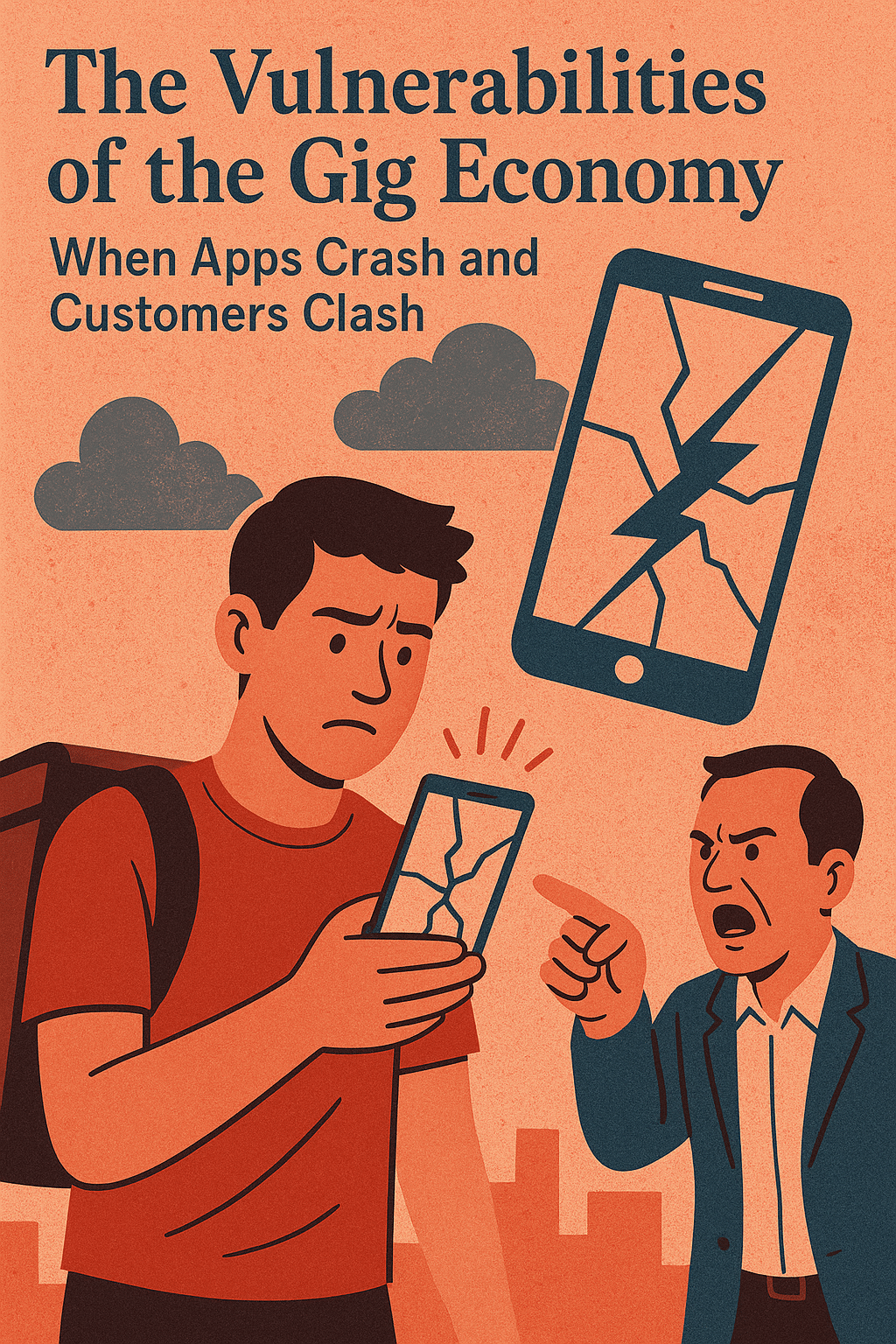The Vulnerabilities of the Gig Economy: When Apps Crash and Customers Clash
Last week’s DoorDash outage highlighted a critical vulnerability that affects thousands of gig workers across the country. Beginning around 5am Eastern time, the platform experienced widespread technical difficulties that left both drivers and customers unable to access the service. By 8am, over 5,500 reports had been logged on Down Detector, with the service not fully restored until 10:30am. For many drivers who rely on DoorDash as their primary income source, those five hours represented a significant loss of potential earnings during the valuable morning rush.
This incident serves as a powerful reminder of one of the fundamental principles we consistently emphasize on the Gig Economy Podcast: diversification is essential for survival in the gig economy. Relying exclusively on a single platform creates a dangerous single point of failure. When that platform experiences technical difficulties, which is inevitable with any technology-based service, drivers who haven’t established alternative income streams find themselves completely unable to generate income. The most successful gig workers maintain active accounts on multiple platforms, allowing them to pivot quickly when one service experiences problems.
Customer service challenges continue to plague both drivers and customers across gig platforms. In a particularly frustrating example shared during our podcast, an Uber Eats customer attempted to increase their tip for a driver who had provided exceptional service, only to be repeatedly misunderstood by customer support representatives who appeared to be following scripts rather than addressing the actual request. Despite clearly explaining that they wanted to provide a larger tip to their delivery person, support representatives continued to misinterpret the situation as a complaint about late delivery, eventually offering credits to the customer instead of facilitating the additional tip for the driver.
Another significant challenge facing delivery drivers is navigating pickups at high-traffic event venues. Philadelphia sports fans have reported a troubling pattern where rideshare drivers accept ride requests from the sports complex designated pickup area, only to cancel as they approach. This creates a cycle where prices surge due to apparent demand, and customers end up paying more for their rides. Some drivers openly acknowledged waiting until prices surge before accepting rides, while others admit to canceling accepted rides when they notice prices increasing, hoping to receive the higher fare on their next request.
Safety concerns remain paramount for delivery drivers, particularly those handling food deliveries who may encounter territorial dogs. A sobering reminder of these dangers came from Florida, where a 65-year-old grandmother delivering for Uber Eats suffered severe injuries requiring a five-hour surgery after being attacked by two dogs while delivering to a neighbor’s house. Experienced drivers recommend always taking a moment to assess your surroundings before exiting your vehicle, carrying protective items like pepper spray, and maintaining awareness throughout each delivery.
The autonomous vehicle revolution continues its uneven progress, with Waymo vehicles demonstrating both promising advances and concerning limitations. A recent video showed a Waymo autonomous vehicle driving onto a freshly paved street in Atlanta, stopping midway, performing a three-point turn, and appearing confused about how to proceed. This incident joins previous reports of autonomous vehicles struggling with emergency vehicles, construction zones, and other unexpected road conditions that human drivers navigate instinctively.
For rideshare drivers looking to enhance the passenger experience while earning additional income, Octopus tablets offer an interesting opportunity. These free devices provide entertainment including trivia games and sports scores for passengers, with drivers earning monthly payments based on usage. The tablets require no financial investment from drivers and can generate approximately $50-75 monthly for full-time drivers.
As the gig economy continues to evolve, successful workers must remain adaptable, safety-conscious, and diversified across multiple platforms. The most resilient gig workers understand that technology will occasionally fail, customers will sometimes be unreasonable, and unexpected challenges will arise. By maintaining multiple income streams and prioritizing safety, gig workers can navigate these challenges while building sustainable independent careers.

